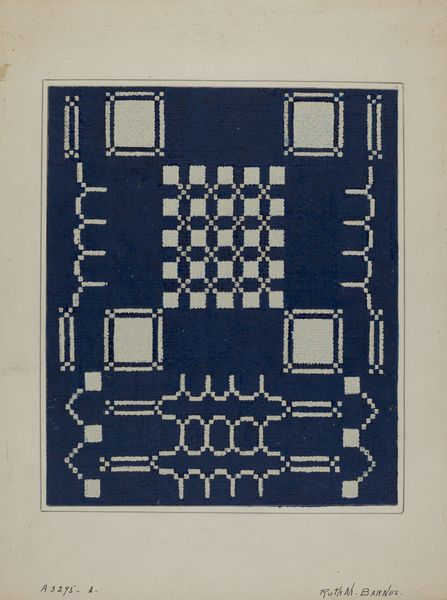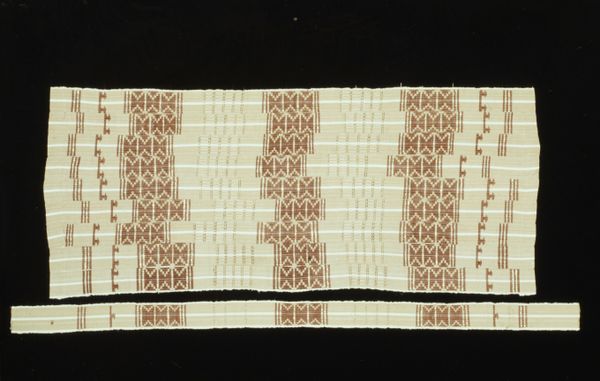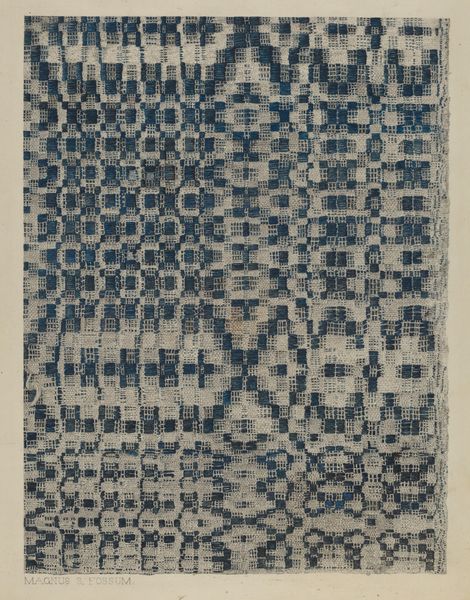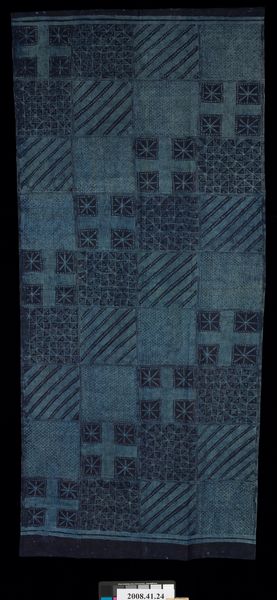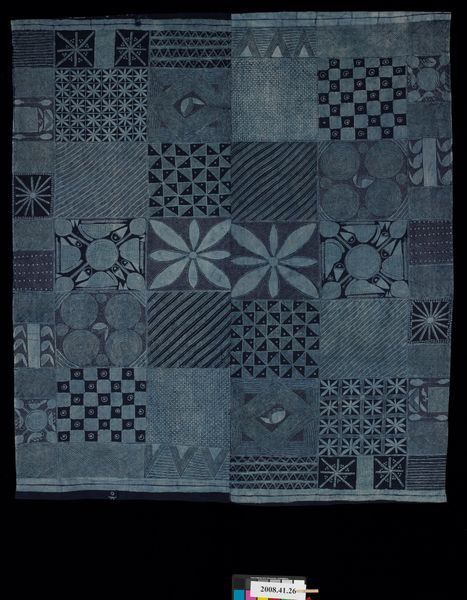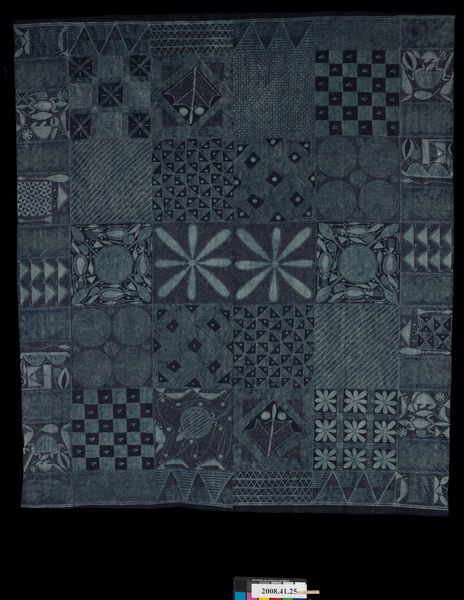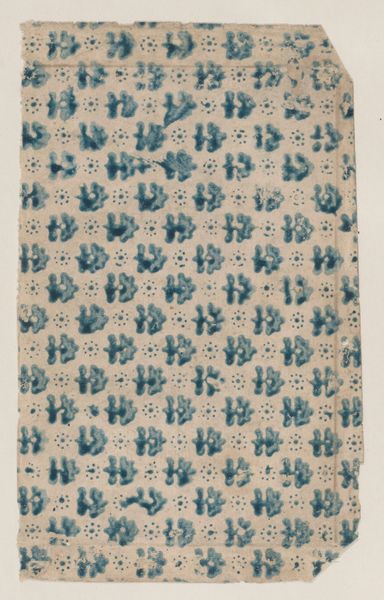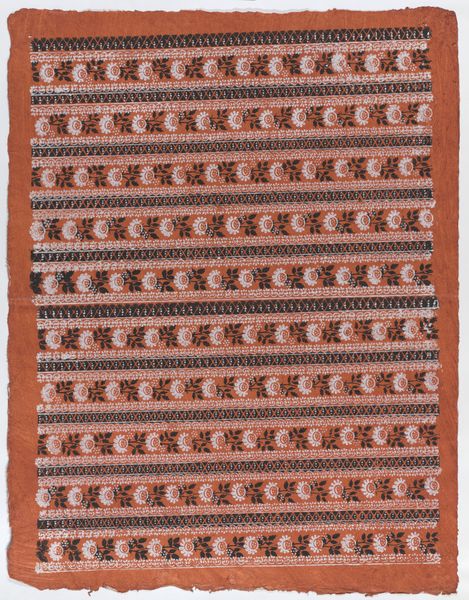
weaving, textile, cotton
#
weaving
#
textile
#
coloured pencil
#
geometric
#
line
#
cotton
#
islamic-art
Dimensions: 60 1/4 × 39 in. (153.04 × 99.06 cm)
Copyright: Public Domain
Editor: Here we have a woven textile called "-Pelete bite- lower wrapper," created by an artist of the Kalabari people around the late 19th century. It's cotton, dyed in these hypnotic geometric patterns. It feels so… order-driven, but there’s an imperfection to the dye that humanizes it. What strikes you when you look at it? Curator: Well, aren't we all seeking order in chaos? It reminds me of a fascinating dream I had once, filled with endless corridors and these same mesmerizing spirals. Beyond my subconscious, the "Pelete bite" cloths, worn by Kalabari women, were far more than mere fashion statements. Can you imagine, each geometric motif and carefully chosen color acting like a coded message, a family history whispered in cloth? Editor: Coded message? That sounds really interesting! So the pattern isn’t just decorative? Curator: Absolutely not! This lower wrapper could symbolize lineage, social standing, even trade routes and connections. Think of the weaving as their personal Wikipedia entry! But there’s something almost playfully deceptive about it, don’t you think? A Western eye might see similarities to Greek meanders, but this cloth speaks a distinctly Kalabari language. A question for you – what does the repetition do to you? Editor: The repetition? I guess it creates rhythm… almost musical? It makes me want to decode it. It’s so simple, yet so… intentional. Curator: Exactly! It invites us to look closer, to question our own perspectives. This wrapper makes me think about how art can speak volumes beyond words. I see it as a tangible record of people, a family heirloom filled with stories and histories. What did you learn? Editor: How wrong I was to think it was simply decorative. Each choice meant something specific! I learned how to “read” it, a bit, anyway.
Comments
minneapolisinstituteofart about 2 years ago
⋮
Kalabari men and women of Nigeria occasionally wear a unique cloth called "pelete bite" (“cut-thread cloth”), which is created by altering fabrics imported from India. Starting with existing striped or checked patterns, new designs are made by cutting parts of the white threads with a razor and removing them. The technique also produces little holes, adding to the visual effect. The women who create "pelete bite" are important figures in Kalabari society: artists, innovators, and entrepreneurs. Their art transforms imported cloth into a cultural symbol.
Join the conversation
Join millions of artists and users on Artera today and experience the ultimate creative platform.

